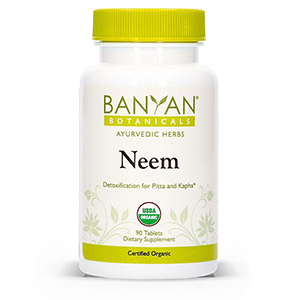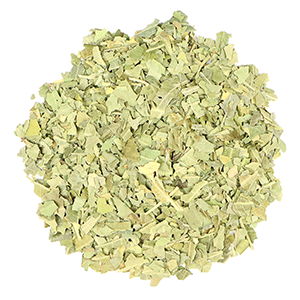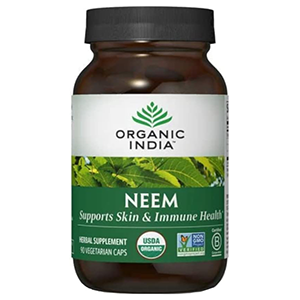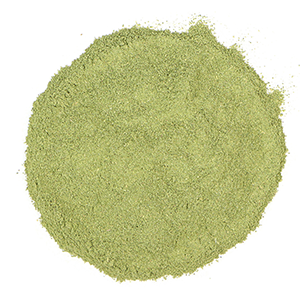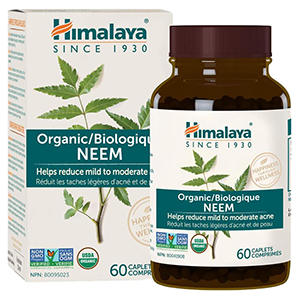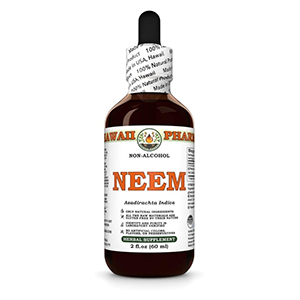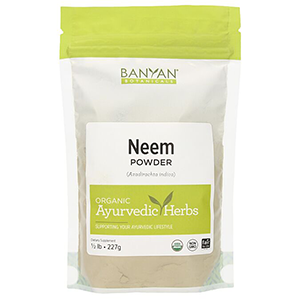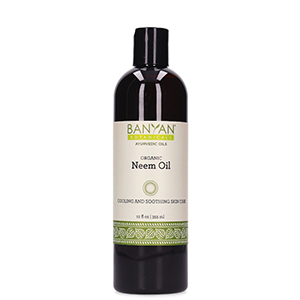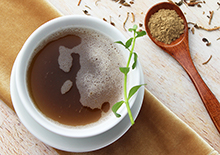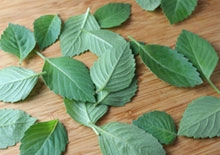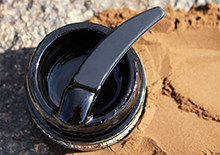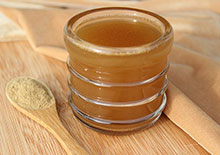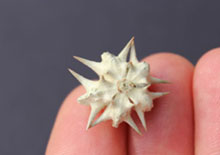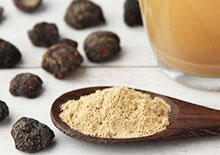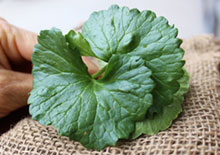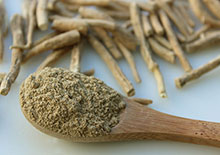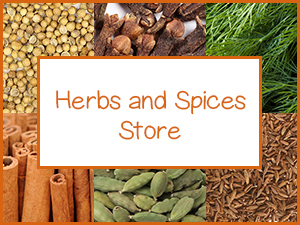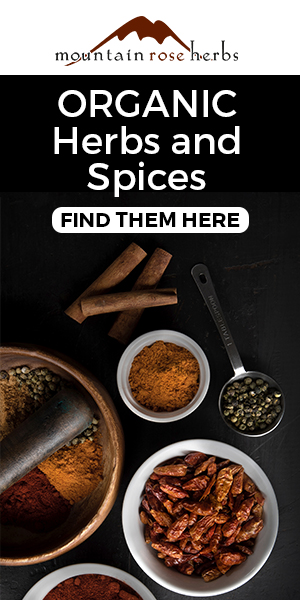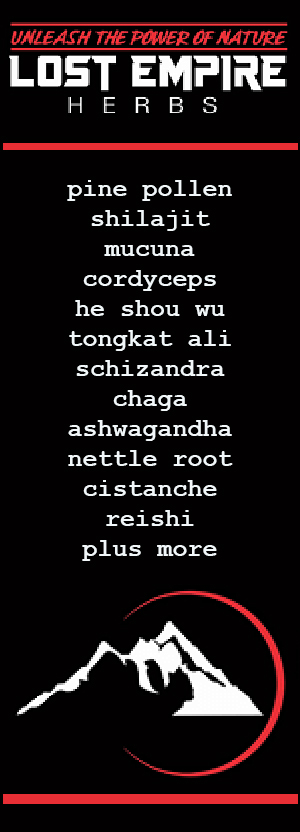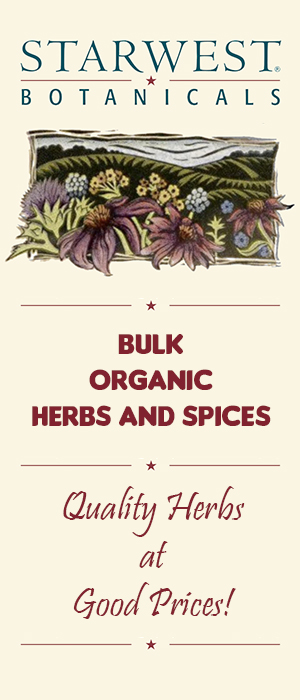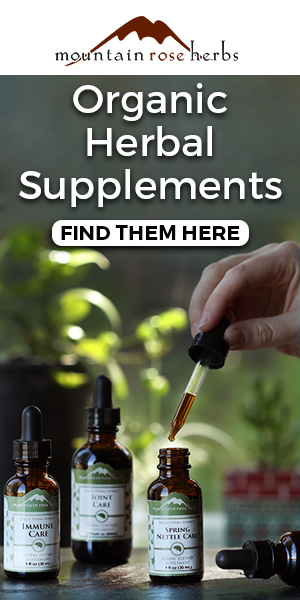- Home
- Ayurvedic Herbs
- The Power of Neem Leaves
The Power of Neem Leaves, Ayurvedic Herb for Healthy Blood, Skin & More
Intro | Benefits of Neem | How to Use Neem Leaf | About Neem Oil | About the Neem Tree | Precautions | Shop
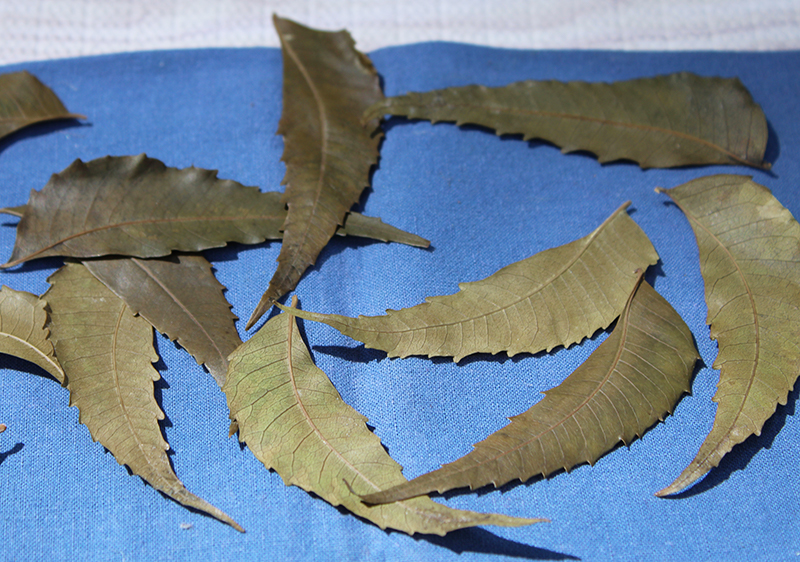
It doesn't take much reading of ancient or modern Ayurvedic texts to discover that neem has been and continues to this day to be a very powerful species.
According to Hindi mythology, the neem tree Azadirachta indica is of "divine origin", born as drops of amrita nectar (the elixir of immortality) directly to earth from the Devas. Also called "margosa" or "nimba", a term derived from Sanskrit to mean "to bestow health".
Table of Contents
Intro | Benefits of Neem | How to Use Neem Leaf | About Neem Oil | About the Neem Tree | Precautions | Shop
Neem has origins in Siddha medicine, one of the oldest traditional systems of healthcare in India. It was one of the first herbs cited by Siddhars on palm leaf parchments in the ancient Tamil language.
Neem has been a household herbal remedy with great spiritual significance in Indian rural daily life dating back to 5,000 BC. At one time, it was in fact found as an ingredient in over 50% of all Ayurvedic preparations.
The neem tree is known also as "Village Pharmacy", "Heal-All" or "Nature's Drugstore", titles which make reference to its multipurpose uses. That's because all parts of the neem tree, the leaf, the root, the seeds, the bark and the fruit are medicinally useful.
On this page, however, we are discussing the power of neem leaves as a tea, powder or extract, not neem oil derived from the fruit and/or seed. This is a substance that should only be used externally on the skin which we will discuss further below.
There are some overlapping compounds in the leaf and oil, but neem leaves are far more suitable for internal use. They are full of active phytochemicals that make them one of the most potent leafy herbs on the planet with very strong therapeutic potentials for humans.
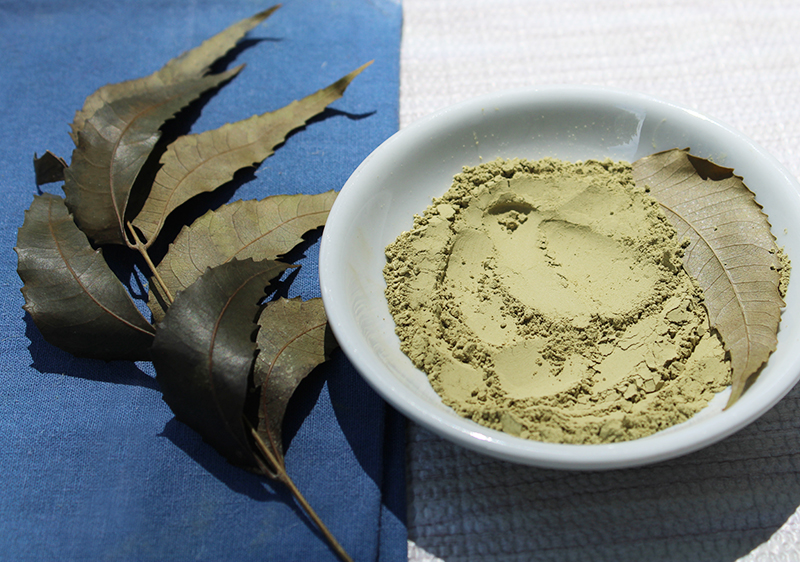
Highly Valued Benefits of Neem Leaves
The powerful benefits of neem and its leaves come from the triterpenoid compounds such as nimidin, nimbin and gedunin. The most famous however is the limonoid known as AZADIRACHTIN.
Leaves also contain phenols and antioxidants like quercetin, catechins, vitamin C and carotenoids. Here is the list of their most potent benefits revered throughout the ages.
Detox Blood Purifier
The leaves of the neem tree are one of the most available and widely used parts of the potent Azadirachta indica species.
Fresh leaves are green and when harvested quickly dry to an olive-brown color. Commonly used to make neem leaf tea or ground as a powder, it only takes very small amounts of this powerful herb to have an impact. (Usually between 1/4 to 1/2 a teaspoon.)
One of the strongest actions of neem leaf tea or supplements is as an "alterative" herb or blood purifier. This attribute comes from the leaf's very bitter compounds, like NIMBIN.
It is considered an excellent herb for periodic cleansing as it supports the body's natural detoxification processes and acts as a gentle liver detox.

In the book Rasayana, it was stated that "It is a common practice to take a bath in the decoction of its leaves or to chew tender leaves as a blood purifier."
The leaves also have a cooling effect on the body for clearing out inflammation or excess heat. It is therefore also antipyretic (or fever-reducing).
In Ayurveda, it is extensively prescribed for Pitta and Kapha imbalances as it can break up excess mucus (or ama) and cool hot fiery Pitta heat. Often it is an ingredient in many herbal preparations to provide equilibrium to a formula.
Unlike Ayurvedic herbal adaptogens, like ashwagandha, shatavari or mucuna, neem is best for periodic internal use only; not to be used on a regular basis.
The Power of Neem Leaves as a Skin Healer
A long-time folk remedy for an array of skin issues, neem is one of the top most famous skin-healing herbs of all time.
One of the great benefits of using neem leaves internally is that its mentioned blood purifying properties can also simultaneously address skin ailments on the outside of the body.
As we have often discussed many herbalists know that when we tend to the body's channels of detoxification and support the general health of the liver organ, skin problems often clear up as a result.
Of course, the topical use of neem is also widely employed. It is commonly used in natural skincare products as well as DIY salves, face masks or massage oils. Neem oil is frequently utilized in this regard, but powdered leaves can also come in very handy for such purposes.
The book "Yoga of Herbs" indicates its use for skin disorders such as eczema, ringworm or hives. But we also found evidence that neem is helpful for acne, warts, psoriasis or simply beautifying and rejuvenating the skin in general.
The azadirachtin compound is one of the main components present in the leaves which exhibits very strong antimicrobial actions. Neem powder can be used to make a paste or compress and applied directly to the skin or even the scalp to prevent dandruff and soothe itching. Likewise, it is perfect for use in foot soaks or baths.
As an antifungal agent, it is excellent for things like athlete's foot or foot fungus.
Promotes Digestive Health
One of the lesser-known traditional uses of neem leaf is as a digestive herb. This is owing mostly to its bitter taste qualities helpful for reducing "ama" or undigested waste accumulation. It can therefore improve bowel regularity and elimination.
Neem powder is often combined with warming spices to add balance and effectiveness for a range of body types.
Not only can it support digestion, but is likewise very famous for its antiparasitic and antibacterial triterpenoid compounds such as nimbin, nimidin, gedunin and of course azadirachtin.
Neem supplements or tea can therefore come in handy for clearing out unwanted intestinal microbes, like parasites or when candida overgrowth is a concern.
Supportive to Immune Functions
Neem tree leaves and their many cleansing antimicrobial (*) nutraceutical benefits of course make them supportive to maintaining healthy immune functions.
In recent times, It was suggested in some research using neem leaf extract capsules twice a day for 28 days could help reduce the risk of contracting certain viral infections.
Keep in mind, however, that neem leaf supplements should NOT be used by those who are physically weak or fatigued.
Oral Health and Dental Hygiene
One of the famous customary uses of neem is for dental hygiene and oral health care. It is used in natural toothpaste, tooth powders as well as mouthwashes for its great antiseptic compounds.
Chewing on neem tree twigs or leaves is a common teeth cleaning ritual in regions of India where trees are abundant.
How to Use Neem Leaf
There are different ways to use neem leaf. Fresh leaves can be used for teas or wilted to make liquid alcohol extracts.
Dried neem leaf is typically steeped as neem leaf tea, extracted, or used straight as a powder or capsules. Neem leaf powder can also be incorporated into many DIY skin care recipes.
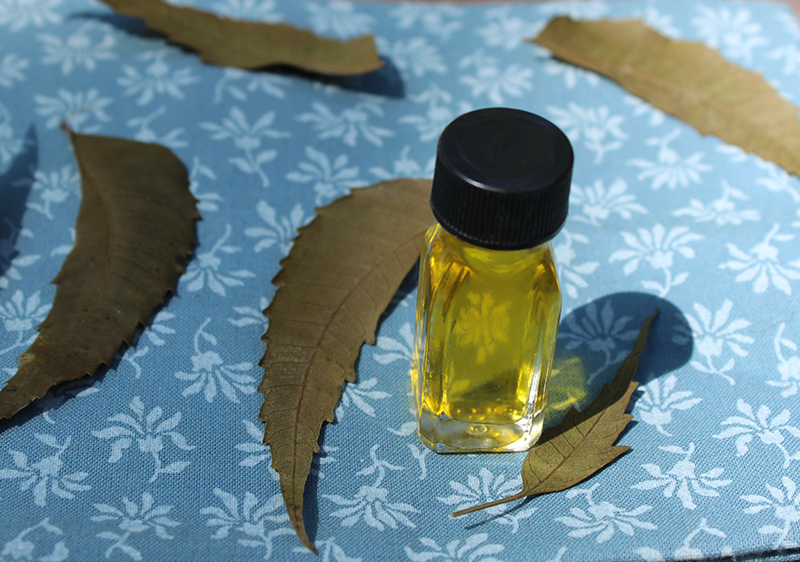
Things About Neem Oil
Neem oil is derived from the fruit and seeds of the plant and has a garlic-like scent.
It is a yellow-colored oil that is extremely bitter, composed of very high amounts of azadirachtin and other related compounds such as nimbin. It is subsequently widely utilized in the hair and skin care industry but is never consumed internally.
The oil was discovered in the 1960s to have natural insecticide and bug-repelling properties. It has been therefore utilized as a pesticide alternative in organic farming methods for decades.
More About the Neem Tree Species
Neem is a highly cherished tree throughout India, where they are a symbol of good fortune. The species name Azadirachta indica is derived from Azad meaning "free", dirakht meaning "tree" and is sometimes referred to as the "free tree of India".
Neem is a long-living species that is easy to propagate from seeds. It is well-established in over 30 different countries around the globe. In some regions of the Northern Territory of Australia, it is actually considered an invasive plant and illegal to sell or transport living plants or seeds.
It is a hardy quick-growing variety with natural insect-repelling properties that tolerates a number of climatic conditions, aside from freezing temperatures or too much water.
There is archeological evidence that dates neem back to the Indus Valley, an ancient civilization that existed 5,000 years ago. In the famous excavation sites of Harappa and Mohenjo-Daro, one of the most predominant medicinal herbs they found was neem.
Precautions:
The power of neem leaves can be too intense for some body types, those who are physically weak or fatigued. Too much neem leaf powder may cause loose stools and digestive upset and is not to be consumed during pregnancy, when nursing or by children. Consult your health care practitioner before use if taking any medications or if you have a major health condition.
Shop Related Products (About Affiliates & Amazon Associate Paid Links)
Affiliate Disclaimer: This section contains affiliate product links. If you make a purchase through our recommended links, we receive a small commission at no additional cost to you. Thanks for the support.

